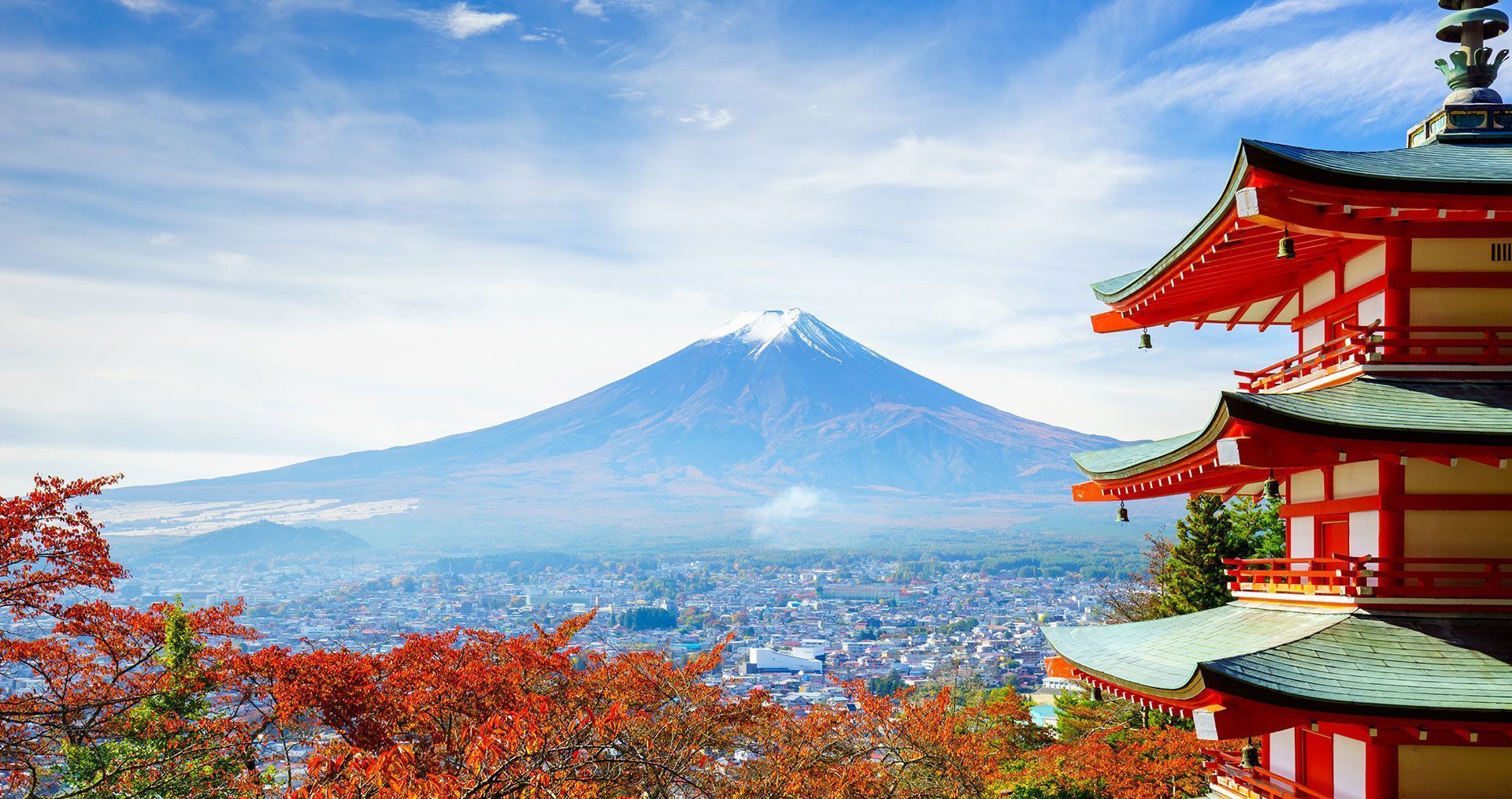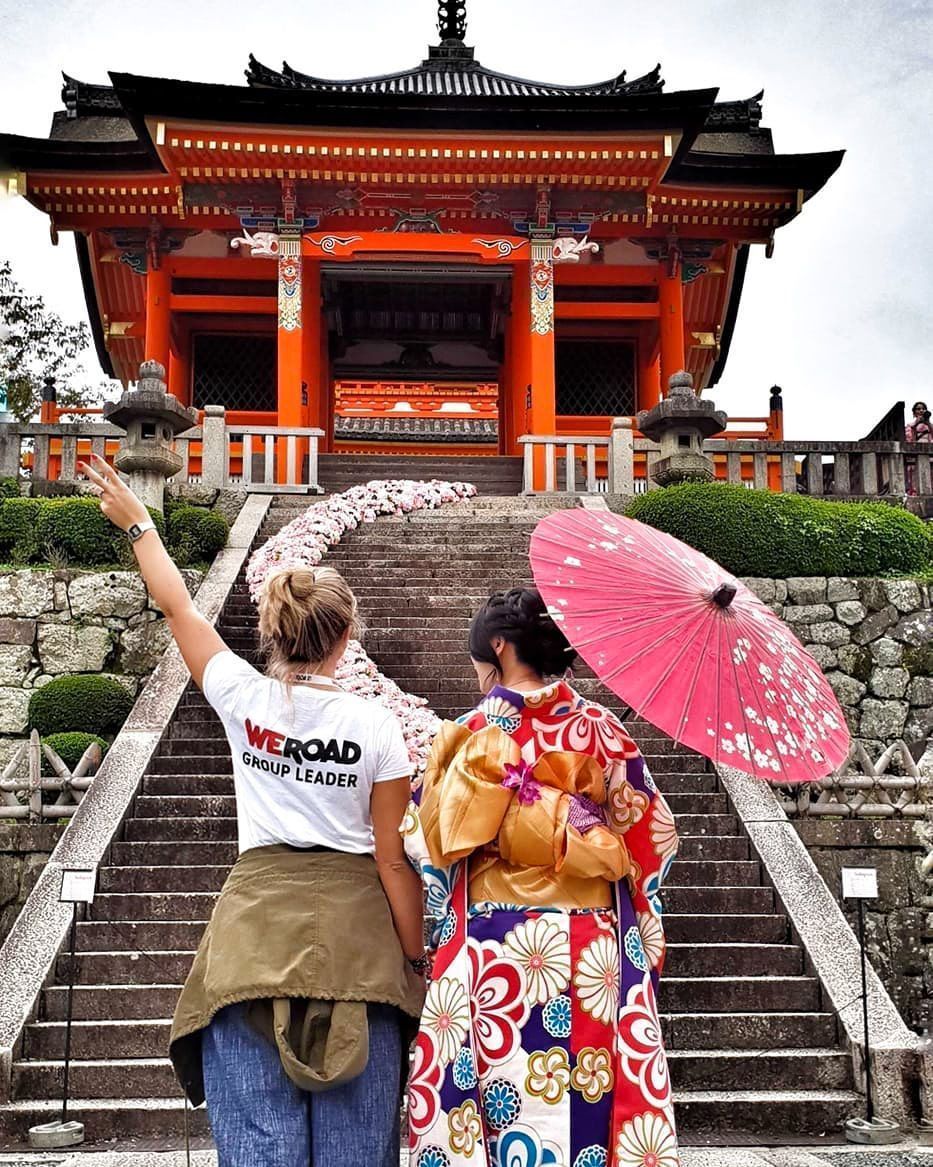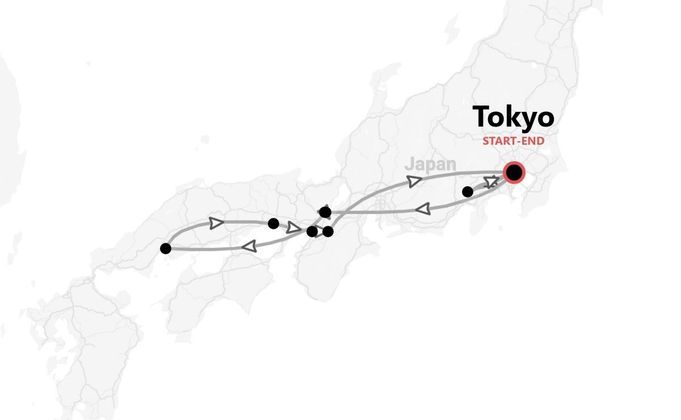
Group trips to Japan
Our organized trips to Japan
Let yourself be enchanted by the Land of the Rising Sun! Huge metropolises, imperial palaces, high-speed trains, and one of the most fascinating and unique peoples await us on our trips: in Japan, you truly step into another world. If you have more than a week to dedicate to exploring this country, the Japan 360° tour will show you every side of it: from the frenzy of Tokyo to the traditional district of Gion, from Marrabbio’s octopus balls (straight out of Kiss Me Licia) to manga and cosplayer shops around the cities, passing through the temples of Nara, the culinary capital Osaka and Hiroshima’s Memorial Park.
If you’re curious to discover this country but have fewer days available, with Japan Express we offer you a full immersion in Japanese culture, cuisine, history and traditions between Tokyo and Kyoto - two cities we’ll travel between on the famous and futuristic Japanese high-speed trains, always perfectly on time!
FAQs about Japan
If you are a UK citizen, to find out the entry requirements for Japan, you can check this informational page from our partner Sherpa. If you need a visa, you can apply for it through Sherpa. If you are not a UK citizen, you can still use Sherpa by changing the nationality in the 'Passport' section.
Before traveling, always remember to check the government website of your country of origin for updates on the entry requirements for Japan – you wouldn’t want to stay home due to a bureaucratic detail!
- UK residents: review the FCDO Travel Advice.
- US residents: consult the US Department of State Travel Advice.
- Other residents: refer to your government or local consulate's travel advice.
Japan is in Japan Standard Time (JST), which is 9 hours ahead of GMT. Japan does not observe daylight saving time, so the time difference with the UK differs throughout the year.
The currency in Japan is the Japanese Yen (JPY). You can easily exchange your Euros or other currencies at airports, banks, and authorized currency exchange counters throughout the country.
It's always a good idea to compare exchange rates to get the best deal.
Credit cards and debit cards are widely accepted in Japan, especially in major cities, department stores, and hotels. However, many smaller shops, restaurants, and rural areas might only accept cash. It's a good idea to carry some Japanese Yen with you. ATMs are available in convenience stores and banks, and you can use international cards there. Mobile payment apps like Suica or PayPay are also becoming more popular and might be handy during your stay.
Tipping is not customary in Japan, and in many cases, it can even be considered rude. Instead, excellent service is expected, and the price you see is the price you pay. If you really want to show your appreciation, you might consider giving a small gift instead. It's always a good idea to respect local customs, so just enjoy the great service you receive without worrying about tipping.
In Japan, staying connected to the internet is pretty easy. You can rent a portable Wi-Fi device at the airport or order one online for delivery to your hotel. These devices provide unlimited data and are convenient for multiple users. Alternatively, you can purchase a prepaid SIM card at electronic stores or convenience stores.
Public Wi-Fi is available in many places like cafes, hotels, and train stations, but it's not as widespread as in some other countries. Japan does not fall under the EU roaming agreements, so make sure your phone is set up for international roaming if you plan to use your home data plan.
The official language in Japan is Japanese. While traveling, you might hear or use some common expressions:
- Hello: Konnichiwa
- Thank you: Arigatou
- Excuse me: Sumimasen
In Japan, they use Type A and Type B plugs. Type A has two flat parallel pins, while Type B has the same two pins plus a grounding pin. The voltage is 100V with a frequency of 50-60Hz. You might need an adapter and possibly a voltage converter for your devices. Check your electronics to see if they are compatible with this voltage to avoid any issues.
The main religions in Japan are Shinto and Buddhism. Shinto is native to Japan and involves various rituals and festivals. Buddhism was introduced from China and Korea and has a significant influence on Japanese culture.
Neither religion has strict practices, and many Japanese people incorporate aspects of both into their lives, along with secular beliefs. There are no specific dress codes or religious holidays that require special preparation for travellers.
For a trip to Japan, pack wisely to make the most of your experience.
Here's a handy list of items to include in your backpack for Japan:
-
Clothing
- Light layers for spring and autumn
- Breathable clothes for summer
- Warm clothing for winter
- A raincoat or umbrella -
Shoes
- Comfortable walking shoes
- Slip-on shoes for temple visits
- Sandals for warmer months -
Accessories and Technology
- Universal adapter for Type A and B plugs, 100V voltage
- Portable charger
- Camera or smartphone for photos -
Toiletries and Medication
- Basic toiletries like toothbrush, toothpaste, and shampoo
- Sunscreen
- Common travel medication like pain relievers, motion sickness tablets, and any personal prescriptions
Japan's weather can vary greatly, so it's best to check the forecast before you go.
Japan's weather varies greatly depending on the region and season. Here's a quick guide:
- Hokkaido (North): Cold winters with heavy snowfall, mild summers. Best time to visit is summer for outdoor activities.
- Tokyo (Central): Hot and humid summers, mild winters. Spring (March to May) and autumn (September to November) are ideal for visiting.
- Kyoto & Osaka (West): Hot summers, cool winters. Spring and autumn are perfect for enjoying cherry blossoms and autumn leaves.
- Okinawa (South): Subtropical climate with warm temperatures year-round, occasional typhoons in late summer.
For a pleasant experience, consider visiting during spring or autumn when the weather is generally mild across the country.
Travel insurance is not legally required for visiting Japan, but it is highly recommended. Medical care in Japan can be expensive, and having travel insurance can cover unexpected medical expenses, trip cancellations, or lost items.
It's peace of mind for your journey, knowing you're covered in case of unforeseen events. Make sure your insurance covers the activities you plan to do.
Cherry blossom season in Japan typically starts in late March and lasts until early May, depending on the region. In warmer areas like Tokyo and Kyoto, blossoms usually begin to bloom in late March.
In northern areas like Hokkaido, you can expect them to bloom in late April to early May. Keep in mind that the exact timing can vary each year due to weather conditions, so it's a good idea to check local forecasts as your travel date approaches.

